Chip Ganassi's championships built with special human toolbox of talent, loyalty and leadership
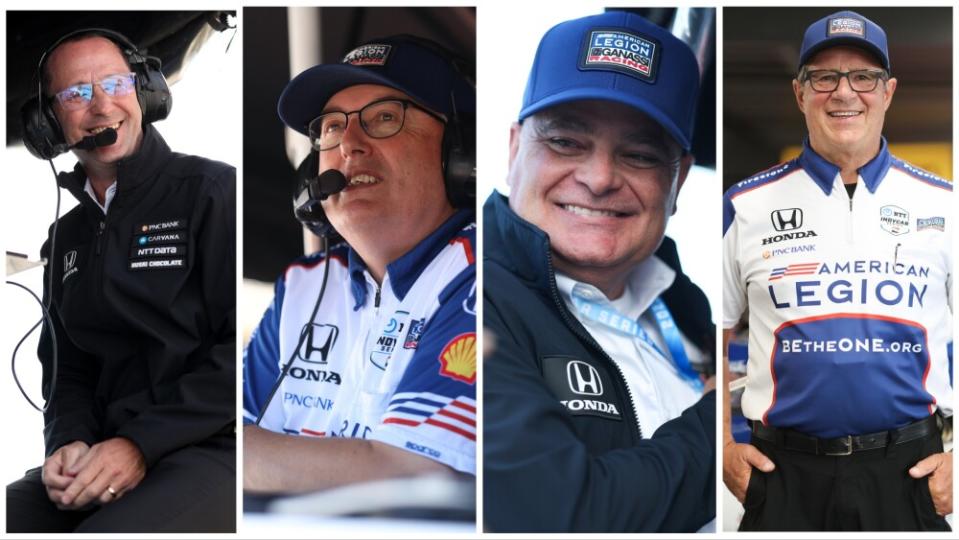
MONTEREY, California – Chip Ganassi’s success as an IndyCar Series team owner is among the greatest in the history of the sport. This year, Chip Ganassi Racing celebrated its 15th IndyCar Series championship with Alex Palou winning his second title in three seasons.
The team began in 1990 and claimed its 15th title in 33 seasons, its 10th since 2008.
Jimmy Vasser won the 1996 CART title for Chip Ganassi Racing’s first championship. By comparison, Penske Racing began IndyCar competition in 1968, claimed its first USAC National Championship in 1977 with driver Tom Sneva and claimed its 15th IndyCar championship with Al Unser, Jr. in 1994.
Since 2008, Ganassi has 10 IndyCar titles and Team Penske five.
“That’s hats off to the guys I get to work with every day,” Ganassi told NBC Sports. “That’s a big thing. That’s big. Really big. Again, it’s the tenure thing. It’s a group of great guys.
HOWDY PARTNER: Holmes has become a positive fixture for Ganassi
THE CHAMP SPEAKS: Alex Palou aims to recover “normal” image after second championship
“If I told the guys tomorrow, we were getting out of racing, and we were going to the moon, those guys would say, 'Let’s go.' They would build a rocket that would be damn good. They are those kinds of guys. I can’t say enough about the people that have been on my team for a long time.”
The team owner has created one of the most successful operations in professional sports by finding great talent behind the wheel of the race car, and equally as important, tremendous talent in the race shop.
He gives the team the resources it needs to win races, Indianapolis 500s and IndyCar championships.
Ganassi calls it his toolbox.
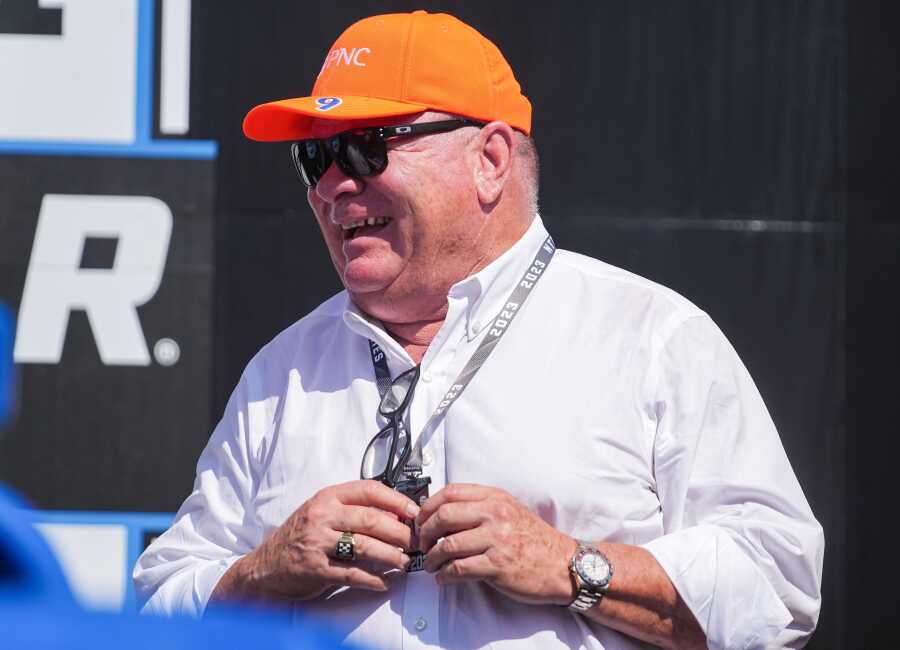
“I go to work every day,” Ganassi told NBC Sports. “Everybody in racing has a toolbox. Some guys have wrenches in their toolbox. Some guys have software in their toolbox. Some guys have micrometers in their toolbox. Some guys have big fancy computers in their toolbox.
“I have a toolbox. What I try to do is give everybody the tools they need to work with and then let them do their job.
“That’s what I try to do.”
People are the most important part of "Chip’s Toolbox."
He has some of the best engineers, mechanics, and crewmembers in racing, and he is successful in keeping them around for s very long time.
“That’s down to Mike Hull and the team he puts together,” Ganassi said, referring to the longtime Chip Ganassi Racing managing director. “For a lot of years, we had a solid foundation of one great sponsor for a lot of years and that started it. Then it is having a solid foundation to stand on that they helped develop.
“It’s been picked up by PNC and The American Legion and people like that of the world that have perpetuated this thing.
“It has a lot to do with winning races. Winning and talent is a snowball thing. When you are winning, people want to be a part of that.
“People like Jim Hamilton, Chris Simmons, Julian Robertson, Barry Wanser, Mike O’Gara, Ricky Davis. They have been with us for a long time and there is some speed in that. I’ve said for a long time, there is speed in tenure.”
Those are names that have been the foundation of the team and around for 20 or more seasons.
But Ganassi is also mindful of finding future leadership.
After the 2022 season, he hired Taylor Kiel, formerly the president at Arrow McLaren and prior to that the same role at Schmidt Peterson Motorsports before it was acquired by McLaren.
Kiel has grown up around the team as his mother, Melinda, is married to Mike Hull. Ganassi is hoping to prepare Kiel for a leadership role in the future.
“You know you are getting old when I remember him in Melinda’s arms,” Ganassi recalled. “Now, he is telling me what to do on Monday.
“One could conclude that is the direction we are moving. It’s a natural progression.”
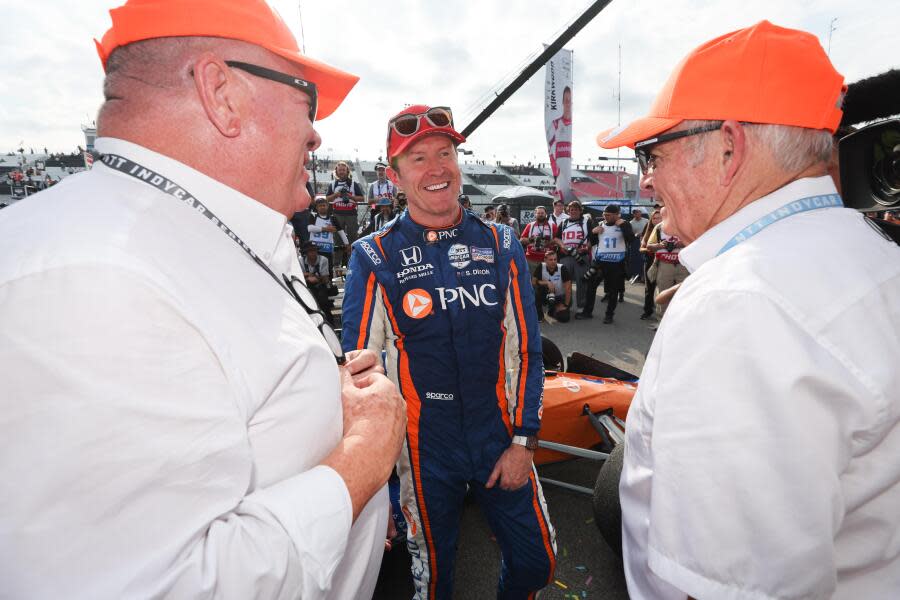
The cornerstone of Chip Ganassi Racing is the No. 9 team with six-time NTT IndyCar Series champion Scott Dixon. Hull is in charge of that operation and that side of the team has enjoyed tremendous success.
Palou, however, could be a legend in the making. He dominated the NTT IndyCar Series in 2023, leading the series with five wins and clinching the championship with one race remaining in the season. That’s the earliest since Sebastien Bourdais won the last of his four-straight Champ Car Series championships in 2007.
“He has some strong guys on his team calling the races, engineering his car, and putting the car together,” Ganassi said. “What we say about Ricky Davis? That’s his fifth championship as chief mechanic. Guys like that know a little bit and they are talking to him more than I am.
“I think Ricky Davis, Barry Wanser (team manager), Julian Robertson (race engineer) on that car, they have some strong people on the stand.
“Depth is a good thing on our team.”
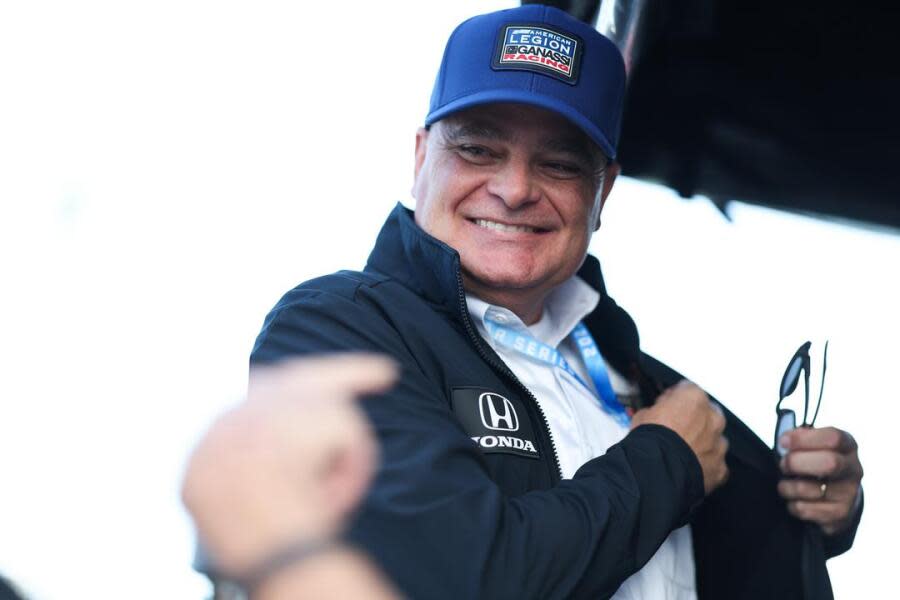
Mike O’Gara stepped in to assist the team for the final two races as Wanser had to step away for a health issue, and the No. 10 car didn’t miss a beat, clinching the championship with O’Gara at the helm with a race victory at Portland on Sept. 3.
Though Hull calls Dixon’s race strategy, he orchestrates the direction of the team as Ganassi’s longtime trusted second in command.
“We’ve lived in this movie for quite a while,” Hull told NBC Sports. “You have to work hard as the season goes on to be prepared to do back-to-back-to-back weekends with talent in your car and with talent working on your car, and an owner who is totally committed to the series the way that Chip is.
“When you add all of those things together, you give drivers like Alex and Scott to be in this position. It’s terrific to be in this position. Maybe this is a Lunar Eclipse year, but we are happy to be in this position.
“What we do at Chip Ganassi Racing is we truly do work on today. We try to get the most out of each other on and off the racetrack, and we try to improve each day.
“If each team member can look in the mirror and know that they did that, then the results we have shown this year come to fruition.”
Hull offered an astute observation about the career path that the team’s two leading drivers have taken at this stage of their journey.
“Scott Dixon represents where Alex Palou is today,” Hull said. “That’s where Scott Dixon was at Alex’s age on the team.
“What Scott Dixon has proven is loyalty with a good team helps you win races. We watched Rick Mears do that with Roger Penske. He stuck with one owner his entire career and look how special he was and how well they supported each other.
“We have two goals on this team – winning the Indianapolis 500 and winning the championship. We were first runner-up at Indy this year, but now we have the championship.”
Ganassi is at the top of the organizational chart as the team owner. As managing director, Hull makes Ganassi’s vision reality.
Below that are IndyCar team managers that put the plan into motion. On Palou’s No. 10 car, that is Wanser, who continues to be treated for his health issue but had a strong influence on this year’s championship.
Ricky Davis is the chief mechanic for Palou and is another of the longtime, loyal crew members at Chip Ganassi Racing.
He started with quarter-midgets after his family moved to Arizona when he was 6 years old.
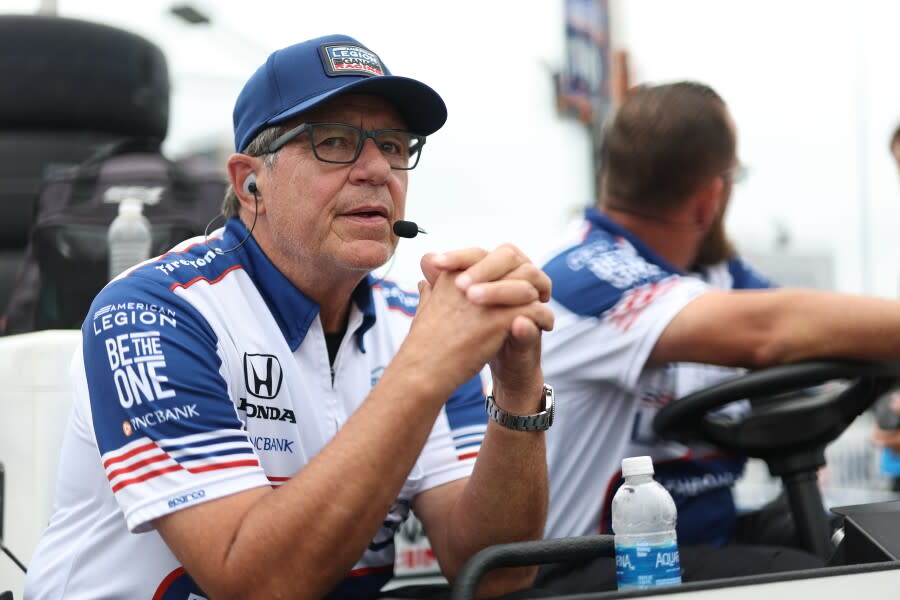
“We raced quarter-midgets, and it has been my dream ever since to be a race car driver,” Davis told NBC Sports. “My brother and I went on to build our own Midgets, our own Sprint Cars and our own engines, everything we could.
“Once our dad passed away, it wasn’t the same. I got a phone call from a guy named Bill Martin in Arizona who got me an interview with Vince Granatelli.
“I’ve been doing it ever since.
“I never thought I would get the job and here I am, 33 years later, and still doing it.”
Davis understands why so many good people have remained at Chip Ganassi Racing for so long.
“I can tell you speaking on my behalf, his loyalty to me and the things he has done for me and the way he has treated me,” Davis said of Ganassi. “He has been fair. He has been honest. I haven’t had the desire to go anywhere else. I wanted to stay here.
“We have built a base, a foundation for this team that continues to grow. Not making big changes, not changing the world, we are not reinventing the wheel, we are just growing with everything that we know and what we have gained. That is what has made us so much better.”
Ganassi is also a man who doesn’t hide his emotions, or his feelings. He can pat you on the back one minute and want to kick you in the butt a few minutes later.
He demands excellence and doesn’t settle for anything less.
“Absolutely,” Davis said. “He could be mad at you for this particular moment for this particular reason and more times than not, it’s a very good reason and then it is forgotten. He gets it out in the open, he gets it off his chest. You know where you stand with him and then you move forward.
“I believe he looks at you to see how you react from that and go forward.
“It’s great. I don’t know if I could explain it. When I came here and they hired me to come here, they had one or maybe two wins. To be a part of all that and to watch yourself grow as a team, that is all you want. You want to win races. That is what we are hired for and that is what we love to do.
“It is heartwarming, that is the best way to put it.”
Julian Robertson is the race engineer for Palou and has been at Chip Ganassi Racing since 1993. Robertson and the engineering department come up with the setup and the strategy and Davis builds the car to meet that plan.
“We make sure we have everything on the setup sheets and the build sheets exactly how we need it,” Davis said. “If I have questions, I go up and talk to them and relay what we need and what may not be the best thing for the car to change to keep going the direction we are going.
“During the race, I have a little bit of input. They are not afraid for me to speak up because sometimes it sheds a light on things, but the way we ran in 2023, I didn’t have to say very much.
“Our job is to support whoever sits in that car, but Alex Palou is one of the top five guys that I’ve ever had driving my race car. That is who I wanted to have come back.
“I told Alex the other day I wish I was 20 years younger because my future would look really bright. We plan on getting him as many championships as we can for as long as I can be here.”
Julian Robertson’s path to Chip Ganassi Racing 30 years ago actually began at Imperial College London, where he studied aeronautical engineering. When he entered university, Robertson was into airplanes.
Soon, he discovered there was a wind tunnel at Imperial College that did a lot of work on race cars.
Instead of devising machines that flew in the air, Robertson wanted to create machines that sped around race tracks.
“I left college and went straight to Team Lotus in 1985 right after Ayrton Senna won at Portugal,” Robertson told NBC Sports. “I did Formula One until the end of 1991, mainly as a designer and some aerodynamics and running some data systems because I was the youngest guy to start.
“I left there as assistant chief designer. When the money started to run out at Lotus, I was looking for other opportunities.
“I got a call, ‘Hey, do you want to come IndyCar racing in America?’ I was young, free, and single at that time. I came over to America and started with Dick Simon Racing in 1992.
“I did 1992 with Dick and into 1993. Chip Ganassi was starting the Reynard thing fairly heavy for 1994. With my experience engineering Indy cars and as a designer in F1, I got pulled into Chip Ganassi Racing in the middle of 1993 and I’ve been here ever since.”
Robertson was the engineer at Surfer’s Paradise when Michael Andretti delivered Chip Ganassi Racing’s first victory. He was Vasser’s engineer when Chip Ganassi Racing won its first CART championship in 1996.
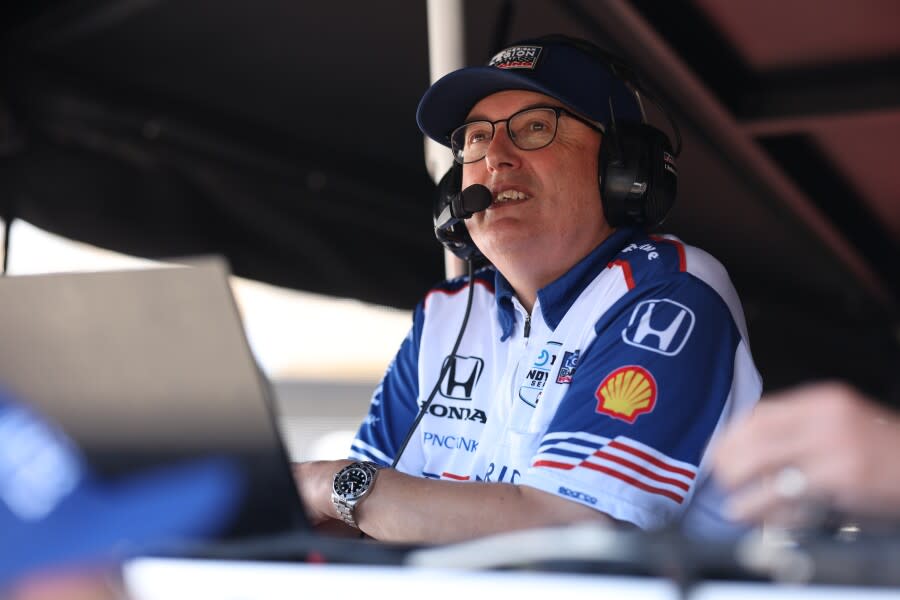
He was on the timing stand every race this season as Palou delivered the team’s 15th and latest championship.
When Robertson began with Ganassi in CART, there was competition among the chassis companies, engine manufacturers and tire brands.
Today’s IndyCar, everyone uses the same car, but the engineering challenges remain.
“Back then, there were bigger gains to be had,” Robertson said. “You were looking for the big ones and the details. There weren’t so many people and there wasn’t so much effort because there weren’t as many people, so you looked for the big gains.
“Now, it’s more difficult to find the small gains but all the effort is going into finding many small gains. There are quite a lot of people involved, there are quite a lot of good people involved on the engineering side at Chip Ganassi Racing. We work in a lot of different areas.
“We keep pushing to find the gains, the gains, the gains. They all keep adding up.”
The engineers devise the setup and helps formulate the strategy, that gets relayed to Wanser or O’Gara, who manages the race with the driver over the radio at the race track.
But there is much more to this process.
“Setup-wise, back at the shop, we work heavily with the simulation group and the development group,” Robertson said. “We have three engineering groups. The racing group travels mostly. The development group stays at the shop mostly but still travels to some events and tests. They are looking at some of the short term like two weeks, one month, but a lot of it is three months, six months, nine months a year out. Then, there is the simulation group.
“We work with the development group and the race group to come up with things that make the car faster in terms of physical parts. We work with the simulation group to simulate what we need to do to make the car go faster. When we are at the shop, we will be running simulations and go through the Driver in the Loop Simulator. We run on the Honda Simulator in Brownsburg, Indiana, quite heavily developing setups for the upcoming events. When we roll into the event, we execute it.
“The whole process keeps rolling.”

There are also the engineering debriefs, where each team laboriously goes over every detail on the car and what changes can be made to make it better.
“Most drivers are good at telling you what they want, it’s a matter of achieving it that is the difficult part,” Robertson said. “Most drivers are fundamentally after the same thing. We share information totally at Chip Ganassi Racing, back at the shop. All the engineering groups are working on all the cars.
“It’s only when we get to the track and in a session that we split into our individual roles. Setup-wise and development-wise, all the cars talk to each other, all the engineers talk to each other during the session. We are going back and forth on what we are doing to get everybody up to speed.
“We are trying to push everything forward. That is the goal.”
Robertson believes the key to Chip Ganassi Racing’s longevity is the culture of winning. That all begins at the race shop.
“When you walk in the door, you realize that everybody is putting their best efforts into it,” Robertson said. “If someone joins the team and isn’t putting their best efforts in, it’s pretty obvious and six months later, they leave of their own accord because they realize everyone else is working hard and trying to get it done.
“There is a win and quality culture at Chip Ganassi Racing.”
Robertson has been at Chip Ganassi Racing for all 15 IndyCar championships. He was also the race engineer for Vasser’s championship in 1996 and Dixon’s 2003 Indy Racing League championship.
He became CGR’s Technical Director in 2006 and returned to race engineering in 2018. His cars have won four of the 15 championships, but at Chip Ganassi Racing, when one driver wins a title, the entire team wins.
“One car wins the championship, but the group that worked on the other cars are all a massive part of that,” Robertson said. “They are working on other cars and as a whole, back at the shop, there are a lot of key players on the team working with the engineering group.
“It’s definitely a team think thing.”
“That’s Chip’s goal, to keep the team successful and bring in new talent and retain it.”
Those are men who have been with Ganassi for over 30 years. Kiel, however, just completed his first season as a member of the team, but in many ways, he has grown up with Chip Ganassi Racing.
“I’ve grown up around the team,” Kiel told NBC Sports. “A lot of people don’t realize that. This is an organization I was pounding around when I was a little kid. I’ve seen it over the last 20-plus years, I’ve seen how it has evolved over time and I’ve raced against it. I understand from a little bit different perspective than some of those guys who have been here for a long time.
“For me, it’s a great opportunity to join a legendary organization. What the future holds, we’ll see. It is certainly my desire and my goal to carry on with what has been happening here for a really long time, which is winning races and winning championships.”
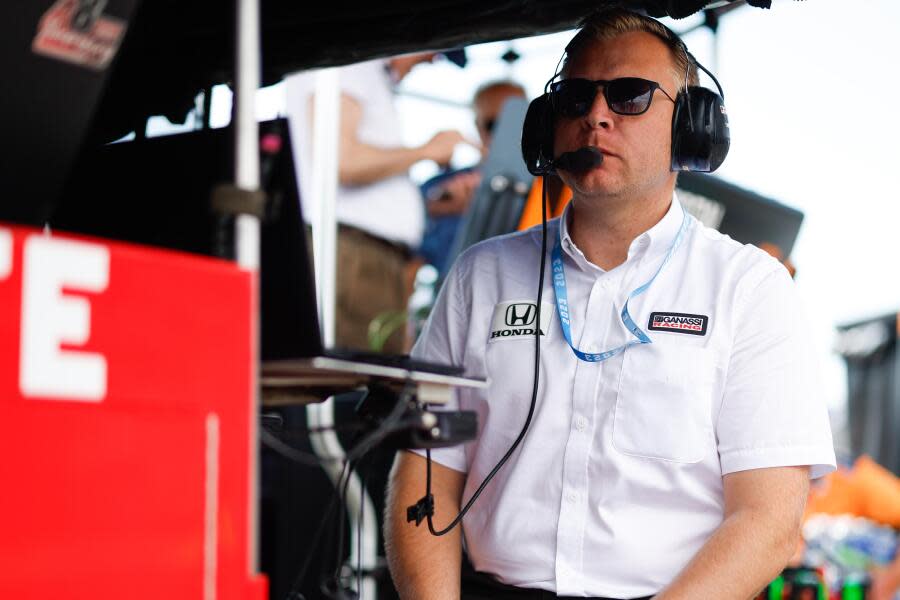
Kiel worked with rookie driver Marcus Armstrong on the No. 11 pit stand. One day, the driver from New Zealand may develop into a race winner and championship contender. And over time, Kiel will be elevated and given more responsibility.
“There is a rich history of winning here at Chip Ganassi Racing,” Kiel said. “Just to be a small part of that in year one was super exciting. Obviously, that is why you come to a place like this, to win.
“It’s one team; one goal. We say it all the time. It’s one thing to say it, it’s another thing to do it and we certainly do it here.
“Everybody prides themselves on being multitalented, the ability to hop in and out of certain situations. My first race at Chip Ganassi Racing was the Rolex 24 at Daytona, on the (timing) stand helping the 02 car.
“That is certainly our philosophy and something we prepare for. There is not a lot of ego here.
“It’s a family environment. There is a tremendous amount of loyalty and there is a focus in all of the right areas. We focus on the people, and we focus on winning races.
“When people get into motorsports, the reason they want to is it’s cool. They want to go racing for a living, but they want to win eventually. Chip Ganassi Racing offers the opportunity to be valued, to have all the resources you need to do your job and to go win races.
“Really, when you sit there and think about it, what else do you want out of an organization?"

